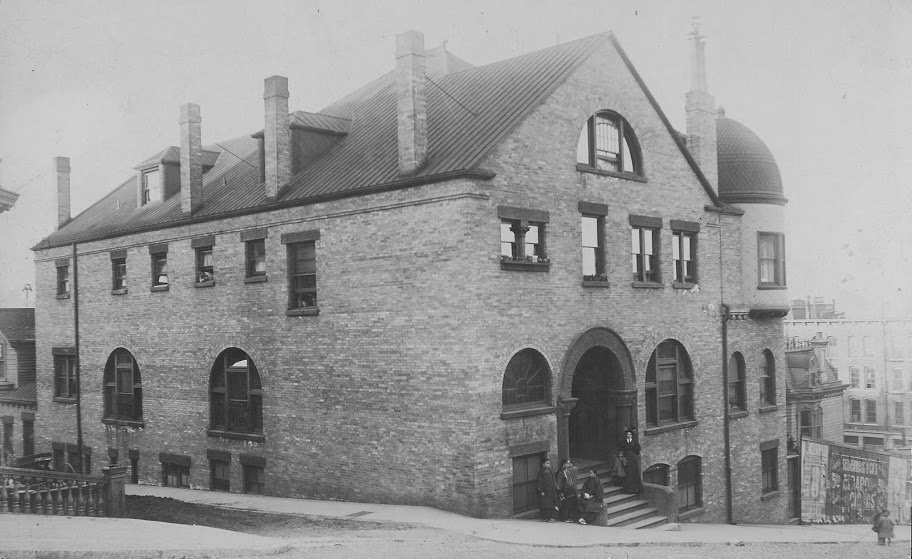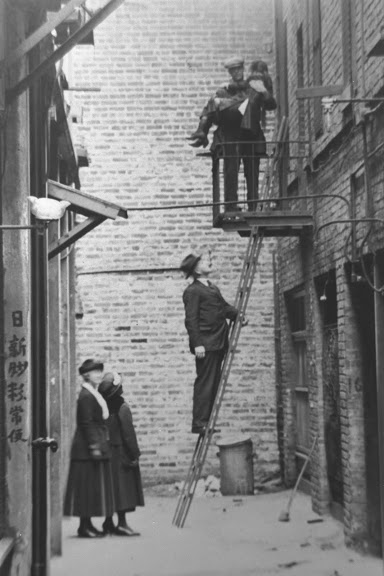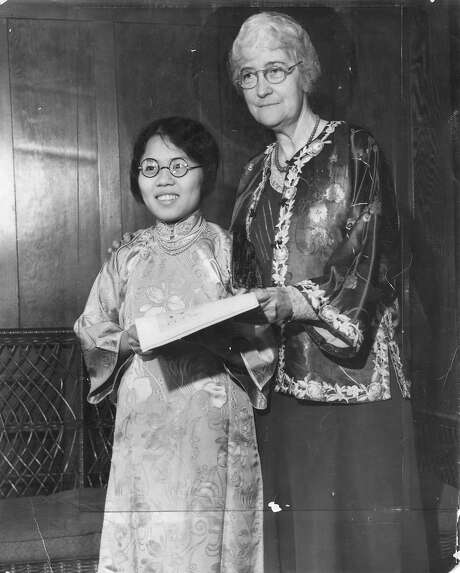In Part 1, May 6, I related the origins of Settlement Houses in America and their movement to the West. On the West Coast, one of the most famous such institutions of all time and continuing into the present was what is now known as Cameron House in San Francisco.
Established in 1875 by the Women’s Board of Foreign Missions of the Presbyterian Church, it was the only “foreign” US based mission of that organization. The goal was to serve the needs of Chinese female nationals sold into “Yellow Slave Traffic” for prostitution and domestic service. Most slaves were brought here at a very early age, often under 10 years.
Two major Chinese organizations controlled Chinatown: The Chinese (business) Six Companies and the Tongs, criminal groups. The latter controlled the slave labor through kidnappings, bribery of white city officials, physical abuse and false documentation. The power of the tongs ran rampant, leaving the Six Companies nearly ineffective in their attempts to curb the violence.
The Occidental Mission School for Girls was directed by Margaret Culbertson who led raids on the brothels, homes and streets of the city, and opium dens to rescue the slaves. In 1894 a 25 year old woman was brought by a friend to the home to meet Miss Culbertson. As the story goes, it was to open the young woman’s eyes to the
real world of San Francisco. The director told her a package of dynamite had been left on the mission’s porch that day and questioned if the young woman wished to continue her visit. She did. Donaldina Cameron was that young woman.
Miss Cameron was the youngest of seven children born in New Zealand; she was two years old when her parents immigrated to California. It seems she led a very protected, religious life until her immersion in the work of the Mission. She began her work at the Mission teaching sewing classes but was soon inaugurated into the rescue work. She accompanied Miss Culbertson and two police officers from the Chinatown Squad. Members of the squad were sometimes prone to accept bribes to warn purveyors of the pending raid, and so the place might be deserted when the Mission and police folks arrived.
Rescued women or children had to agree to convert to Christianity and abide by the rules of the Mission which called for learning English and domestic skills and foregoing all Chinese cultural customs. It was a harsh and rigid policy that endured throughout Donaldina Cameron’s reign as Superintendent of the Mission after Miss Culbertson’s death in 1897 and her retirement in 1934. Donaldina’s attitude toward her charges has been described as “patronizing” and earned her varied nicknames in the course of her long life (98 years.) She was “the Jesus Woman” to the tongs, ”Lo Mo” (foster mother or old mother) to girls who favored her and “The Angry Angel of Chinatown” to community admirers.
Donaldina Cameron is credited with the rescue of over 3000 girls and women. She established homes for the offspring of those rescued: a school/home for boys, another for girls and one for babies outside of San Francisco.

1906 Mission Home for Girls before the Fire
The Mission Home was and still is at 920 Sacramento Street in the heart of Chinatown. The 1906 earthquake did not bring the brick home down but purposely set fires to control all that raged across the area did so. The home was rebuilt in 1907 and continues to serve the community with multiple services and with a connection to the Presbyterian Church. In 1942 the home was re-named: Donaldina Cameron House.
* * * * * * * *
ARLETTA DAWDY writes from Northern California where her 40 year career in Social Work began in San Francisco’s Mission Neighborhood Centers and Telegraph Hill Neighborhood Association. She was responsible for the development of services to girls’ gangs, teen parents and bilingual young families. Social Work training and experiences inform her writing of family dynamics and the human condition. Her books are set in SE Arizona.
Donaldina Cameron and the Occidental Mission Home for Girls appear inBY GRACE, the second book in Arletta’s HUACHUCA TRILOGY.
References: 1. Wikipedia, Donaldina Cameron
2. www.cameronhouse.org
3.Kamiya, Gary, THE WOMAN WHO FOUGHT CHINATOWN SEX SLAVERY FOR DECADES, www.sfchronicle.com, February 2, 2018. Also on cameronhouse.org website.
Photos: Google Images



Arletta, this has been such an interesting series. Thank you for the information. I had no knowledge of the settlement houses prior to your articles. This is great fodder for writers as well as being extremely interesting.
ReplyDeleteThank you, Caroline! I'm glad you found this of interest. In the history of social work two things stand out: "Lady Bountifuls" and the Settlement House movement, both of which have roots in the 19th century.
DeleteI'm in awe of the women who championed the early social work movement. The settlement houses have such an important part in America's history. I'm really enjoying your articles.
ReplyDeleteThank you, Kaye. I had fun placing my character, Grace, at Hull House and at Cameron House (before it got this name!) One of the rewards in researching and writing historical fiction is the divergent paths we tend to follow...
ReplyDeleteI've enjoyed reading your informative posts as well, Arletta, and appreciate the fact that your knowledgeable years in social work would add a wealth of interesting facts to your books.
ReplyDeleteHow kind of you, Cheri. I think we all must bring our histories to our writing. I often use family names and stories purposely and other times I surprise myself...or the characters do!
ReplyDeleteSuch an informative post. Hard to imagine requiring people to convert to a religion and reject their culture in order to get help. Still, 3000 Asian girls were saved by Donaldina and that is a wonderful thing. What an interesting piece of history.
ReplyDeleteAll the best to you, Arletta...
Thank you, Sarah. As the only mission on the mainland, it seems the approach re: religious conversion, followed the pattern of world-wide colonization practices.Hard to imagine how history would read if not for Cameron's activities.
ReplyDelete